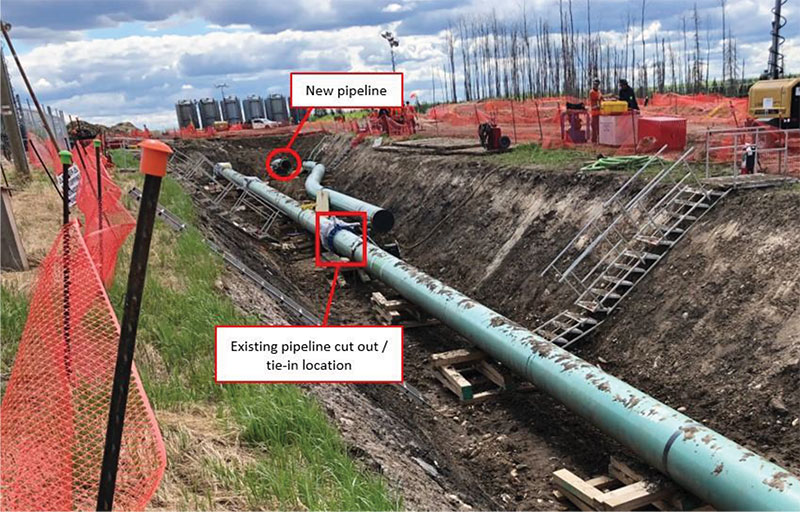November 2021, Vol. 248, No. 11
Features
Using Isolation Plug in Remote Area Pipeline Rerouting Project
Special to P&GJ
A multinational pipeline company in Canada recently contacted STATS Group to provide leak-tight double block isolation of a 24-inch crude oil line that required to be rerouted because of terrain stability issues.
This complex and challenging project required the isolation plug to be pigged 64 miles (103 km), continually tracked and accurately positioned at the isolation location for the tie-in hot works to be completed within a 48-hour shutdown.
Data gathered from regular inline inspection (ILI) runs identified integrity issues. To restore integrity to the line, a new 8-mile (13-km) section of pipeline was laid, avoiding the affected area. Once the pipeline was isolated, purged and vented, the existing pipe was cut out and the new section was safely welded and tied in.
To fully assess the pipeline isolation project, an engineering and feasibility study was conducted to determine the safest and most efficient method of carrying out the isolation. Following the study, STATS proposed the use of a Remote Tecno Plug, a piggable inline isolation tool that provides fail-safe double block isolation of pressurized pipelines while the system remains live and at operating pressure.
The plug was chosen to provide the isolation over a traditional line stop method because it significantly reduced the number of fittings that would be left on the pipeline, therefore reducing potential future integrity issues and limiting the amount of equipment that would be required on-site.
Technicians at the work site conducted final pre-deployment checks on the isolation plug before loading it into the pipeline launcher. The plug was installed into the pipeline at the launcher site behind two purge pigs and followed by two line-fill plugs.
The five-tool pigging arrangement was pigged through the pipeline to the isolation location with 295 feet (90 meters) of product between them. The tools were tracked at regular intervals along the pipeline to ensure accurate positioning of the tools at the isolation location and a preinstalled nitrogen inject point to vent and purge the pipeline. From the launcher site to the set location, the pipeline pigs retained the 295-foot separation.
Once at the isolation location, the Remote Tecno Plug was hydraulically activated to engage the locks and dual seals. Prior to injecting nitrogen between the plug and purge pigs, pipeline pressure downstream of the plug was lowered to ensure the tool was isolating prior to purging and depressurizing the pipeline.
After the pipeline downstream of the plug was purged with nitrogen, it was depressurized, and the plug was formally tested against full pipeline pressure as part of the isolation barrier–proving sequence.
This process involves testing each seal independently with full pipeline pressure in the direction of the expected pressure differential, proving both seals of the double block isolation are leak tight. The annulus between the seals was then vented to ambient to create a zero-energy zone, and an isolation certificate was issued the client.
Following purging activities, the affected section of pipeline was cut, and the new pipeline was welded into place while the pipeline remained pressurized at 330 psi (22.8 bar).
With the tie-in operations completed, the new section of pipeline was pressurized with nitrogen to the same pressure upstream as the plug and the tool was hydraulically unset.
After the Tecno Plug was unset, the plug and upstream line fill pigs were pigged to the receiver through the new section of pipeline, which displaced the nitrogen and filled the new section of pipeline with product.
“The pipeline tie-in was completed safely in just 30 hours,” Wes Gardner, EIT for STATS Group said. “The successful delivery of the project is testament to the teamwork and good communication between all parties.”






Comments